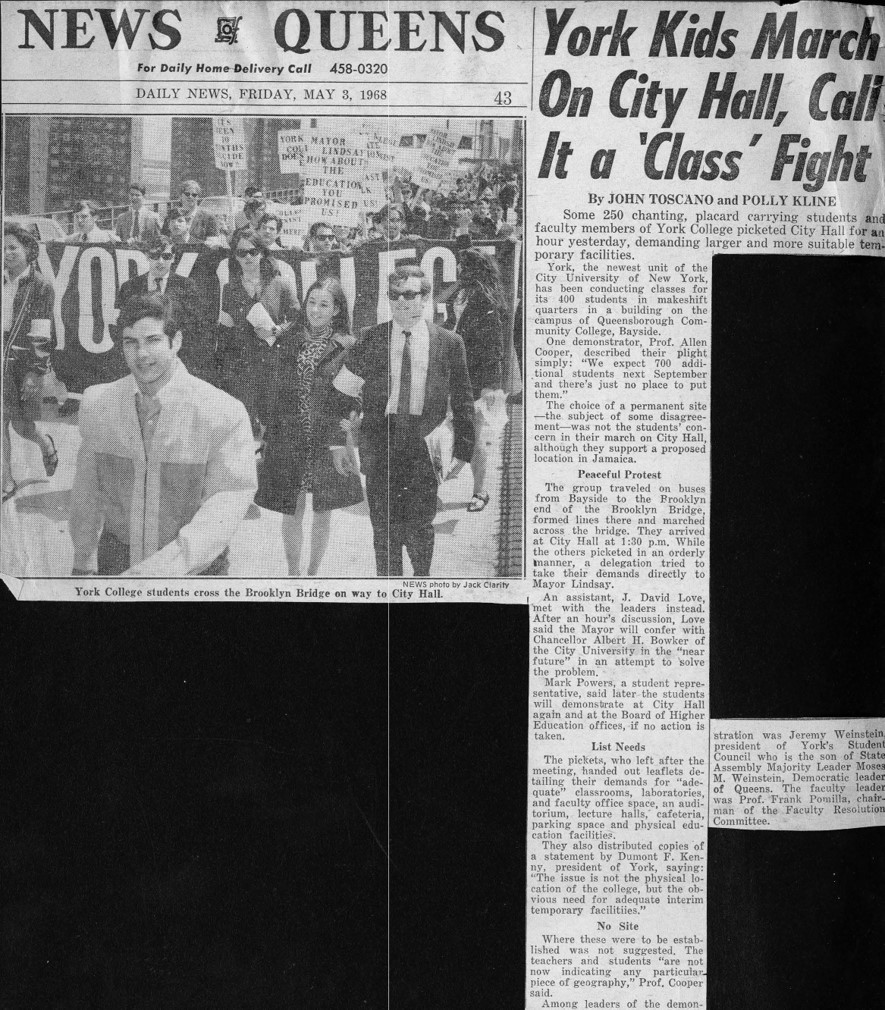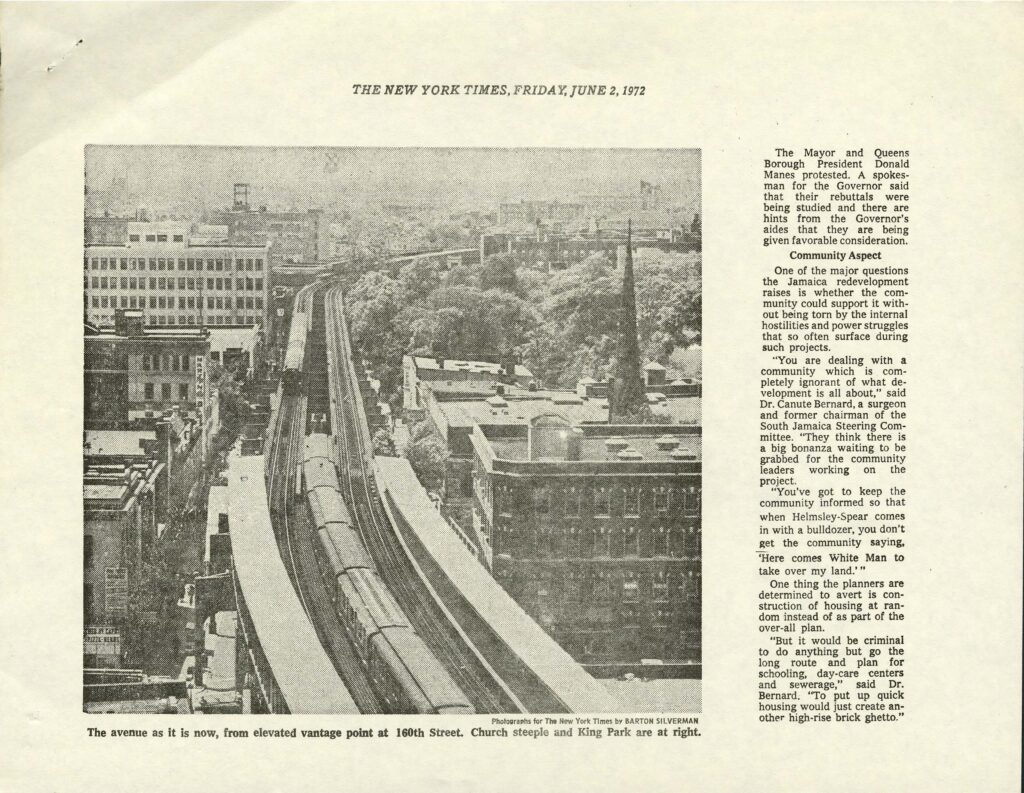

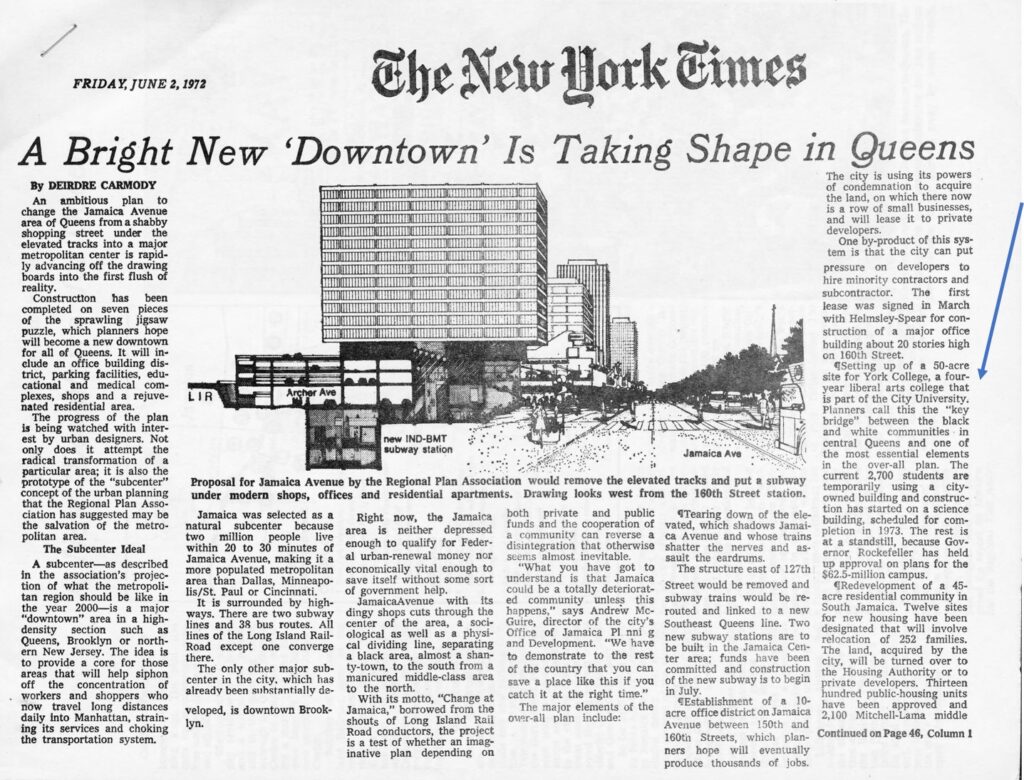




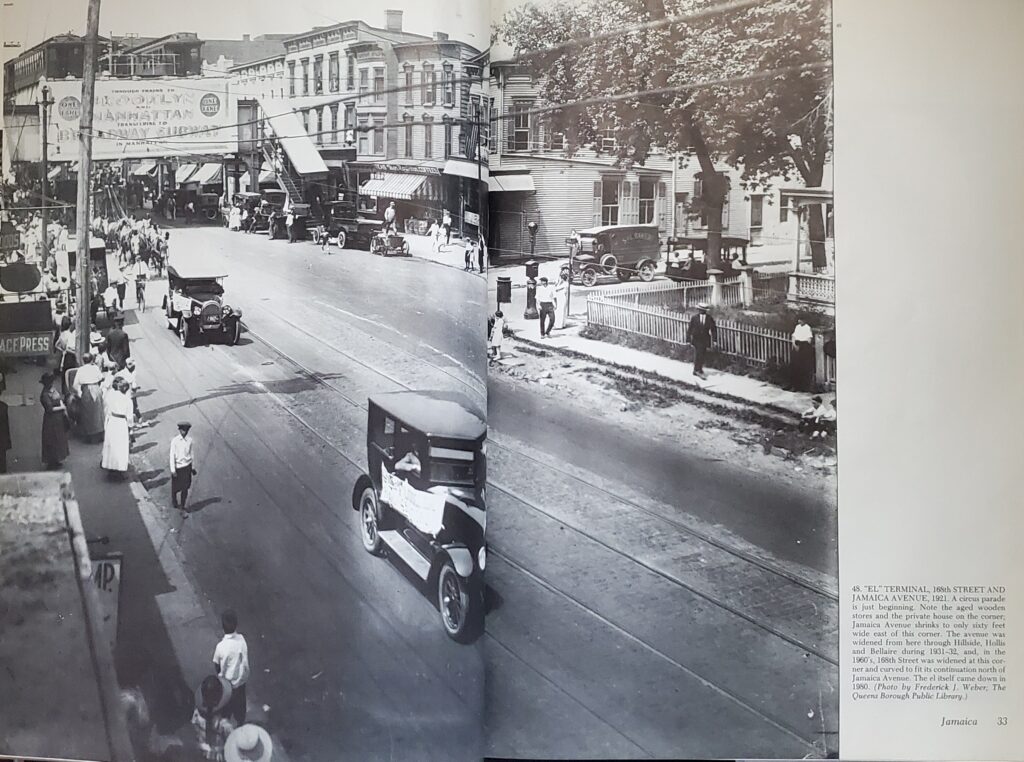
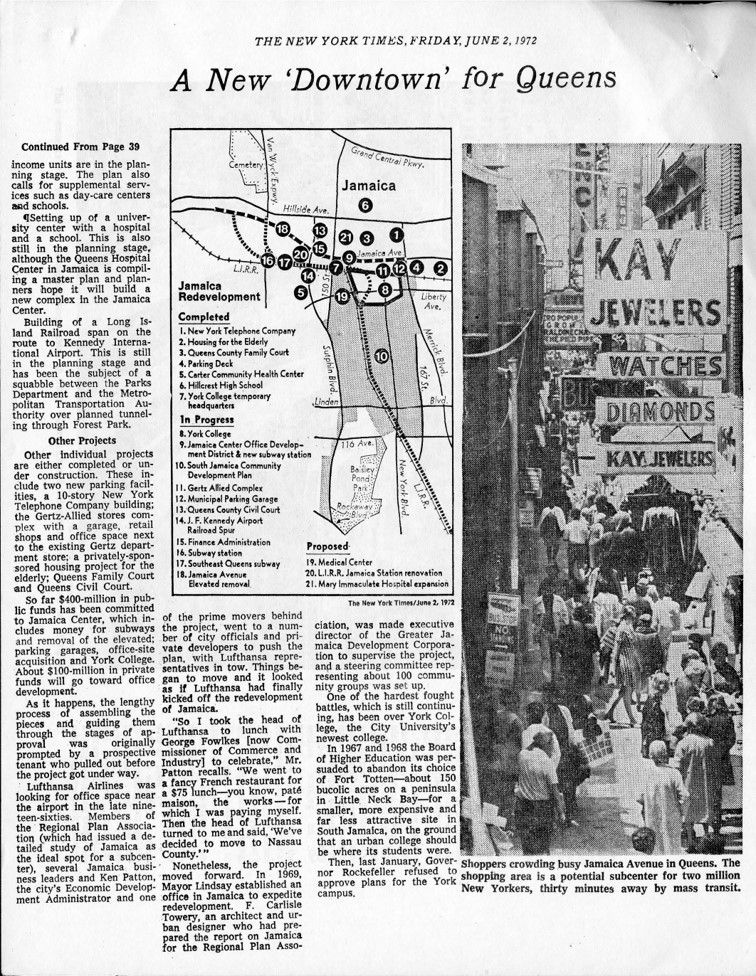








Why does the foundation of the campus sit low to the ground?
The urban renewal area that became York College was comprised mostly of low-rise wooden structures that did not have distinctive architectural features but contributed to the history of Jamaica. The Antioch Baptist Church was carved into the earth on 160th Street. It was documented by Percy Loomis Sperr in 1932. (By Sergey Kadinsky, Forgotten New York, 2018)

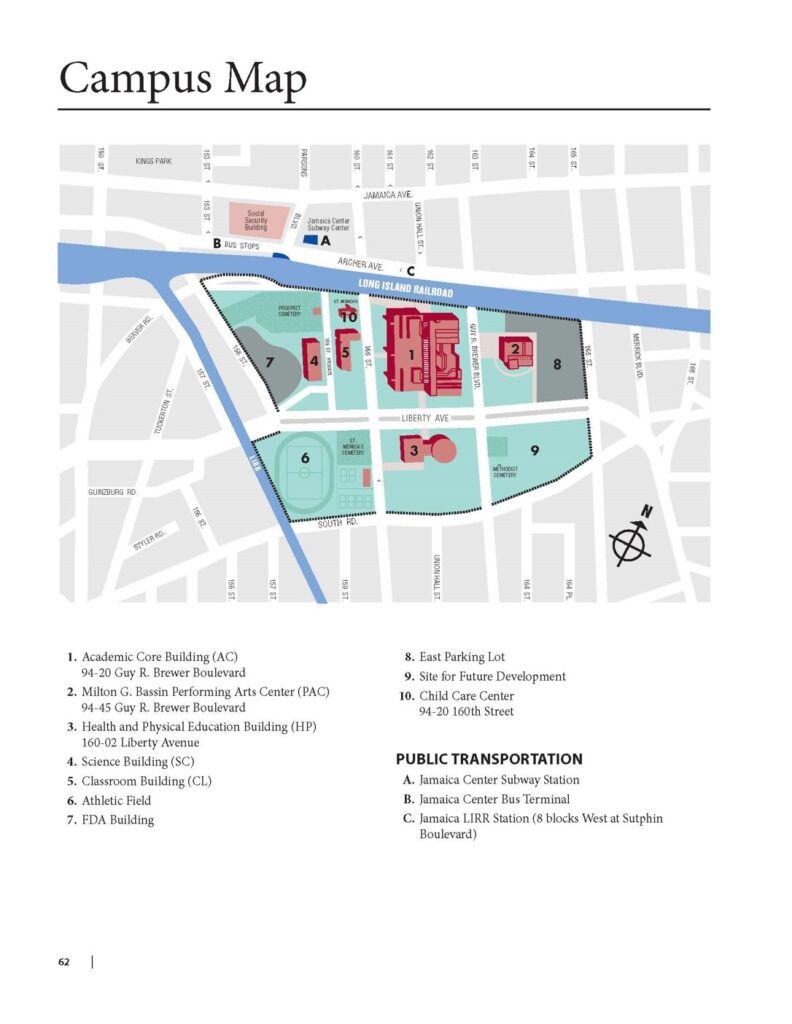

The initial plan for the campus envisioned two superblocks with pedestrian bridges connecting the buildings in an arrangement akin to CUNY’s Hunter College. At the time of Bassin’s retirement in 1991, six buildings had been completed with the massive Academic Core building. Its size and appearance are reminiscent of the North Academic Center at my alma mater CCNY– described by students as prison-like with minimal decoration. The entrance plaza to Academic Core fronts Guy R. Brewer Boulevard, a rare city street with a full name. (By Sergey Kadinsky, Forgotten New York, 2018)

Any talk about Union Hall Street would be incomplete without mentioning the north side of the train tunnel, where the abandoned westbound platform has fake windows reminiscent of those that appeared throughout the South Bronx in the 1980s. This station never had too many users on account of its proximity to the Jamaica station and the nearby subway line. It closed in 1977. (By Sergey Kadinsky, Forgotten New York, 2018)

Inside and around the Academic Core Building there are 23 art installations, many of them evoking black history. On the 160th Street side of the building is Houston Conwill’s Arc, completed in 1986. Inspired by the art of the Kongo people, it features designs native to West Africa, the ancestral home for most African-Americans. (By Sergey Kadinsky, Forgotten New York, 2018)

